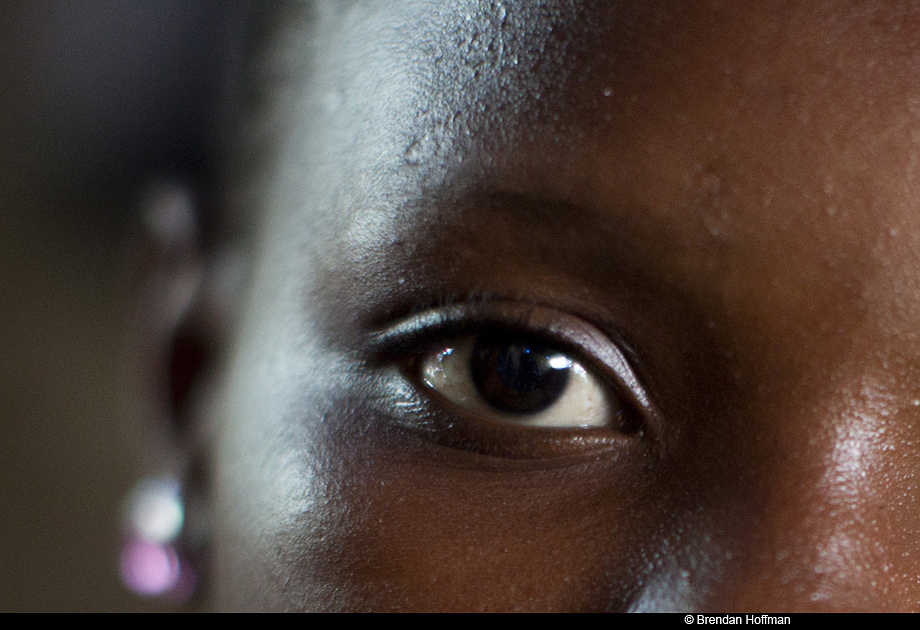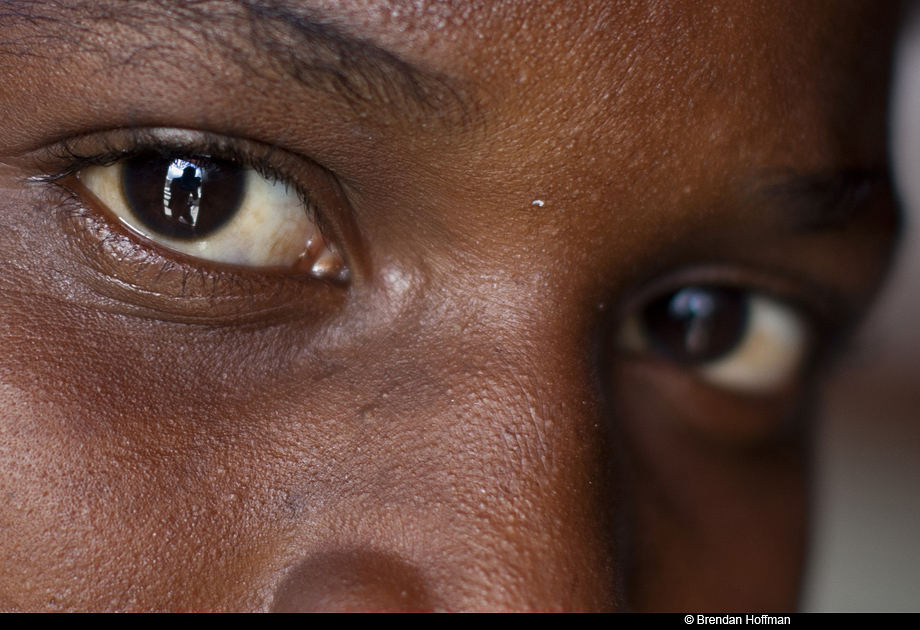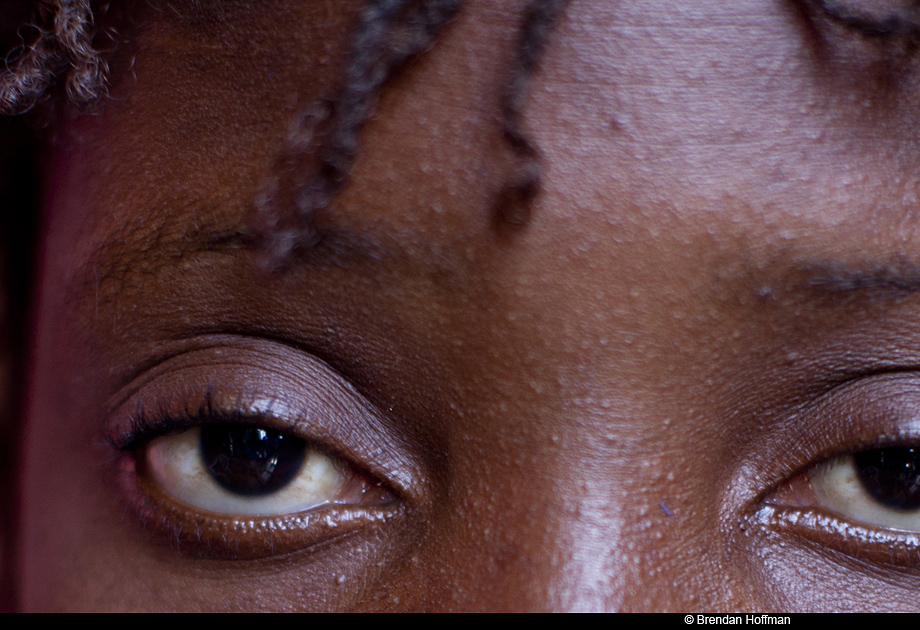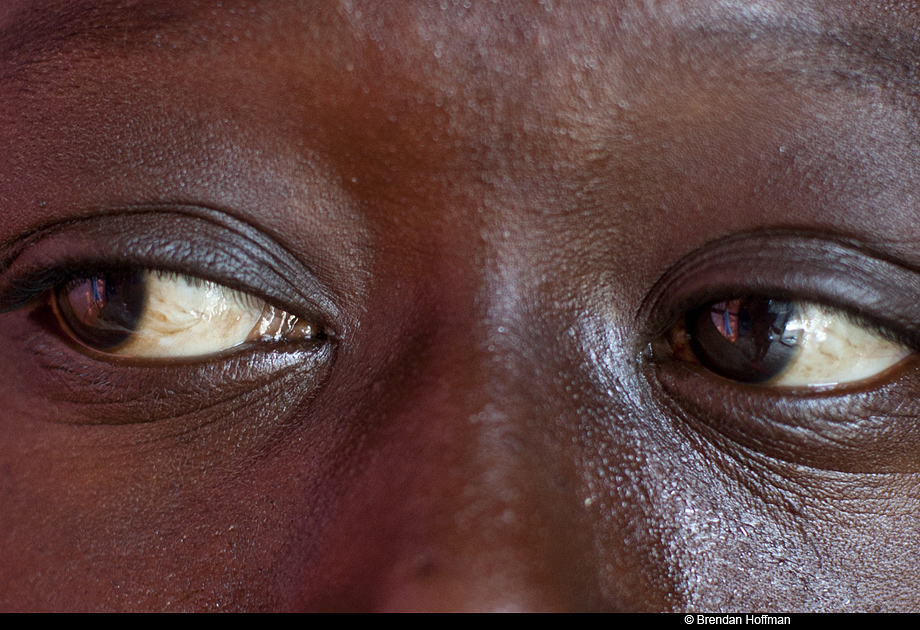Notes
Brendan Hoffman: Eyes on Haiti's Rapes
Angelie, age 14, poses for a portrait on July 14, 2010 in Port-au-Prince. She was raped by four men and two women, all of whom she knew, this past Saturday. It happened when they invited her into their home and offered her food. While she has reported the crime to the police, no arrests have been made.
It’s not like the rapes afflicting Haiti are new.
This Guardian story from March ’09, outlining the problem of rape in the Cité Soleil slum, detailed how half of the victims are children and teenagers. Many of the rapes are perpetrated by police and military, only twelve rapes went to court that past year, and there were only twelve child protective officers for the whole country.
Since the earthquake, MS-NBC discusses how women are forced to trade sex-for-food, and despite the influx of foreign aid organizations and a stepped-up UN presence, security in the tent camps is abysmal. Statistics are hard to come by, but a Haitian support group counted at least 230 known cases in 15 camps in the two months following the quake. It’s not that violence is escaping notice: VOA sketches out the fuller dimensions of the security challenge, while the New York Times spotlights one woman’s recent abuse.
Looking at the Pictures
Because this terror is rampant, we were particularly drawn to Brendan Hoffman’s photos of recent victims of sexual assault — images which literally loom large, but at the same time, manage to balance sensitivity, privacy, and the wishes of these girls and those close to them to make the violence known.
Brendan’s images have not just intensity but also intimacy — an intimacy that defies the searing depersonalization and objectification of the act of rape. These young women, at this scale and through the power of that gaze (whether addressing the camera directly or askance) simply demand to be recognized by you and I.
There are also other things happening in these images. For example: the detail of the facial “landscape” can’t help but draw us in and generate a natural curiosity about the soul inside this skin, as well as the state-of-mind in and behind the eye. If the eyelid is droopy, we want to know if it’s an expression of wariness, or depression, or just being tired. Given the trauma, the compromised living conditions and the continuous danger, sleep is at a premium, as all these young women have bloodshot eyes. Then again, a droopy lid can simply be characteristic, setting off still more curiosity about who this person is.
Lovely, age 12, poses for a portrait on July 14, 2010 in Port-au-Prince. She was raped by a man just last week, after recently moving with her family to the camp on Champs de Mars. She didn’t want to tell the police about the rape but they found out and arrested the perpetrator.
Something else that struck us in the picture above is how the photographer is reflected in the girl’s eye. It speaks to the photographer as witness, and the potential for the outsider — even after such violation — to make an impression. At the same time, however, this kind of access should not be romanticized, as personal space as well as trust are precarious, especially for the powerless.
Finally this image calls out the eye as a recording device, asking us to also consider how the trauma has been imprinted, and what and how much of it each girl still sees as she appears to fix on us.
Magrecita, age 14, poses for a portrait on July 14, 2010 in Port-au-Prince. She was raped by a man she knew to have come out of prison just this month. She reported the rape to the police, who arrested and then released the man.
How the Pictures Were Made
Photographer Brendan Hoffman met a resident of the Champs de Mars displaced-persons camp, a former tax collector and computer science student in the United States, unemployed since the earthquake. The camp is a tent city across the street from the destroyed Presidential Palace in Port-au-Prince. Roughly 3800 people live there, still homeless six months later. The man spoke English, and expressing his concern and outrage, told Brendan that many young women and girls have been raped in the camp, and nobody has done much about it.
Brendan thought, “Living in a tent is a lot less secure than a home, especially for these women since many of their fathers and male relatives were killed in the earthquake.”
Understanding the need for sensitivity, Brendan arranged to meet the victims in two groups the next day, inside tents away from public view. Some came with their family members. Some came with each other, not wanting to tell their families about what happened to them. In every case, he showed them the photographs after he made them.
They were willing to identify themselves to a foreign journalist and tell their stories: “They felt that, at least someone is asking and concerned,” but Brendan felt, “I wanted to preserve their anonymity as much as possible. So I shot really tight and cropped in on the eyes.”
They spoke matter-of-factly, with less emotion than he anticipated. Their voices were quiet and soft, and they avoided eye contact except when looking into his lens. “It’s really hard, staring right into eyes.”
Nathaly, age 19, poses for a portrait on July 14, 2010 in Port-au-Prince. She was raped by eight men – one of whom she knew – the day after the earthquake in January. She reported it to the police but so far they have done nothing.
Ethical Concerns
Previously, it was a given that you must conceal identities and confidentiality of rape victims to protect them from suffering additional pain and trauma. In some cases, victims of kidnapping were identified openly in the media but when it was discovered a rape or sexual attack of any kind had been committed, names immediately were withdrawn.
Over the past few years, however, this policy has shifted.
Rape and sexual assaults are crimes of violence, just as a shooting or beating is a crime of violence. At some point, society began making the transition in seeing this and understand that women don’t “ask for it” by the way they dress, whether or not they show their hair without a scarf or by being good looking or in the wrong place or out too late.
When we continue to identify victims of other kinds of violence but see rape as requiring confidentiality, we’re sustaining this idea. Because the transition has not been entirely made seeing rape simply as a terrible crime (perhaps like any other kind of torture), the victim should be asked how she feels about being identified and she must know that we do not want to cause her any additional harm beyond what she’s already suffered. Her decisions should be respected.
******
Brendan’s photographs allow the girls to be human. They confront us, we see their pain, awkwardness, perhaps even a bit of their soul, and spirit. We cannot remain passive observers.
–Alan Chin, Michael Shaw, and Loret Steinberg
PHOTOGRAPHS by BRENDAN HOFFMAN. // Additional posts in the BagNewsOriginals Haiti series by Brendan Hoffman.






Reactions
Comments Powered by Disqus